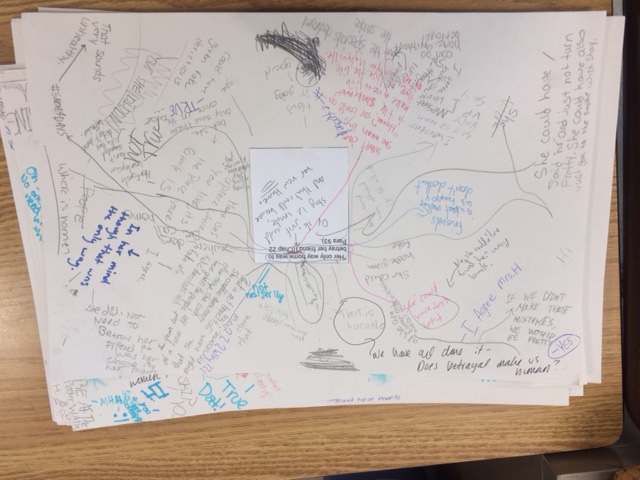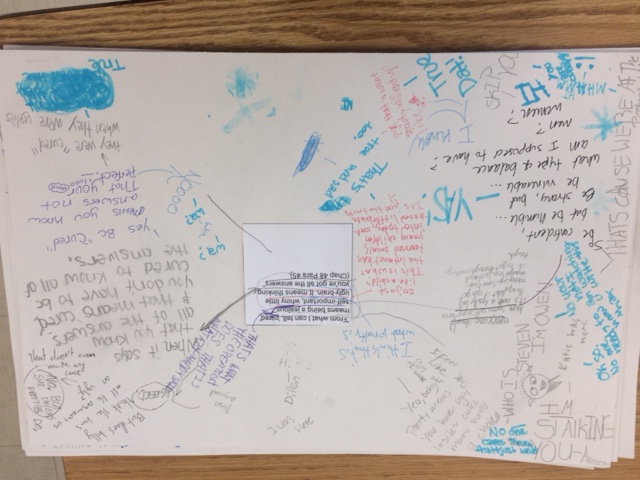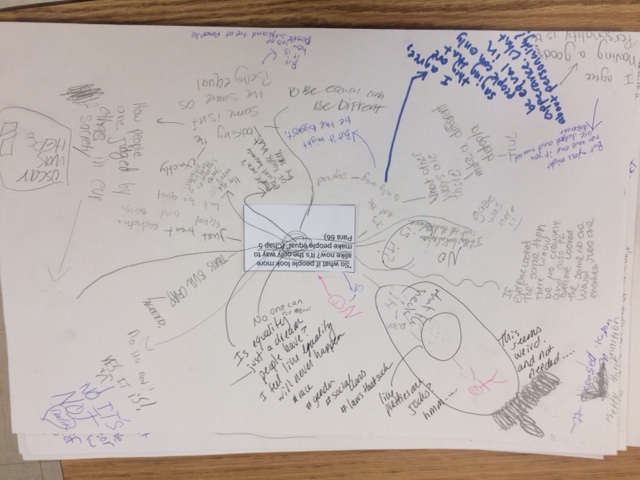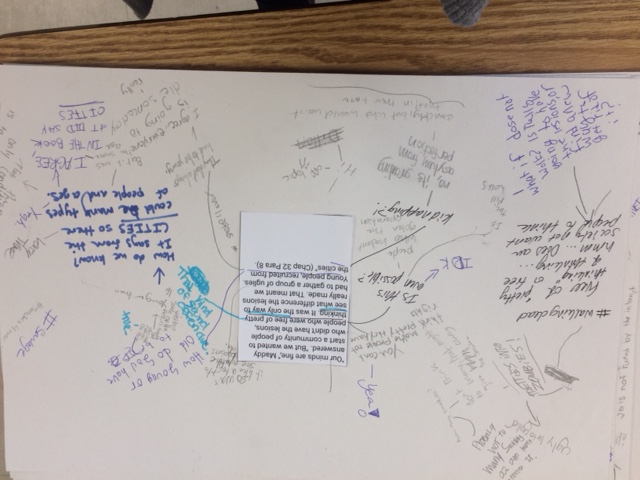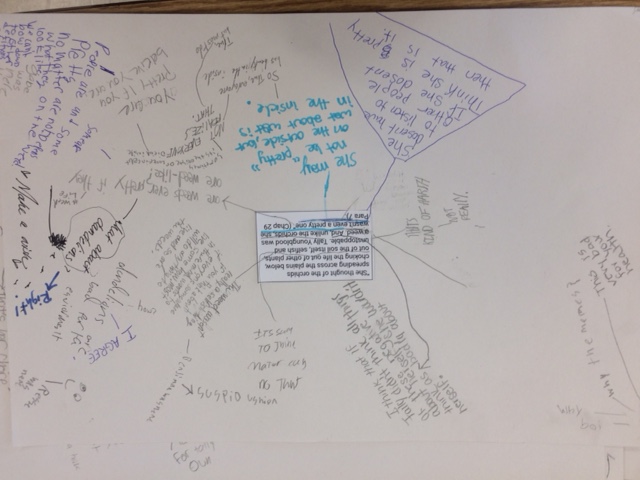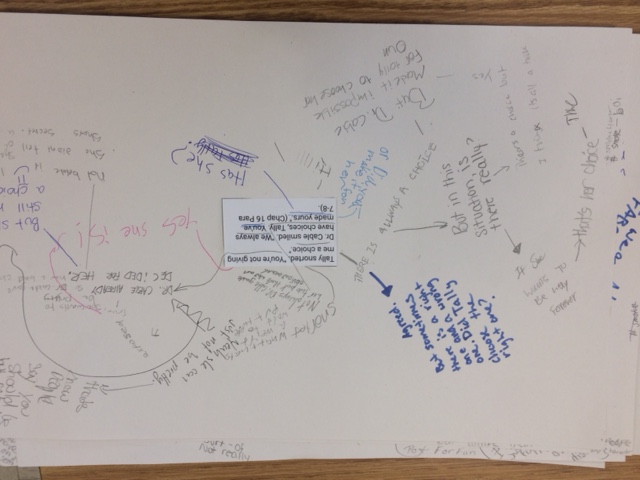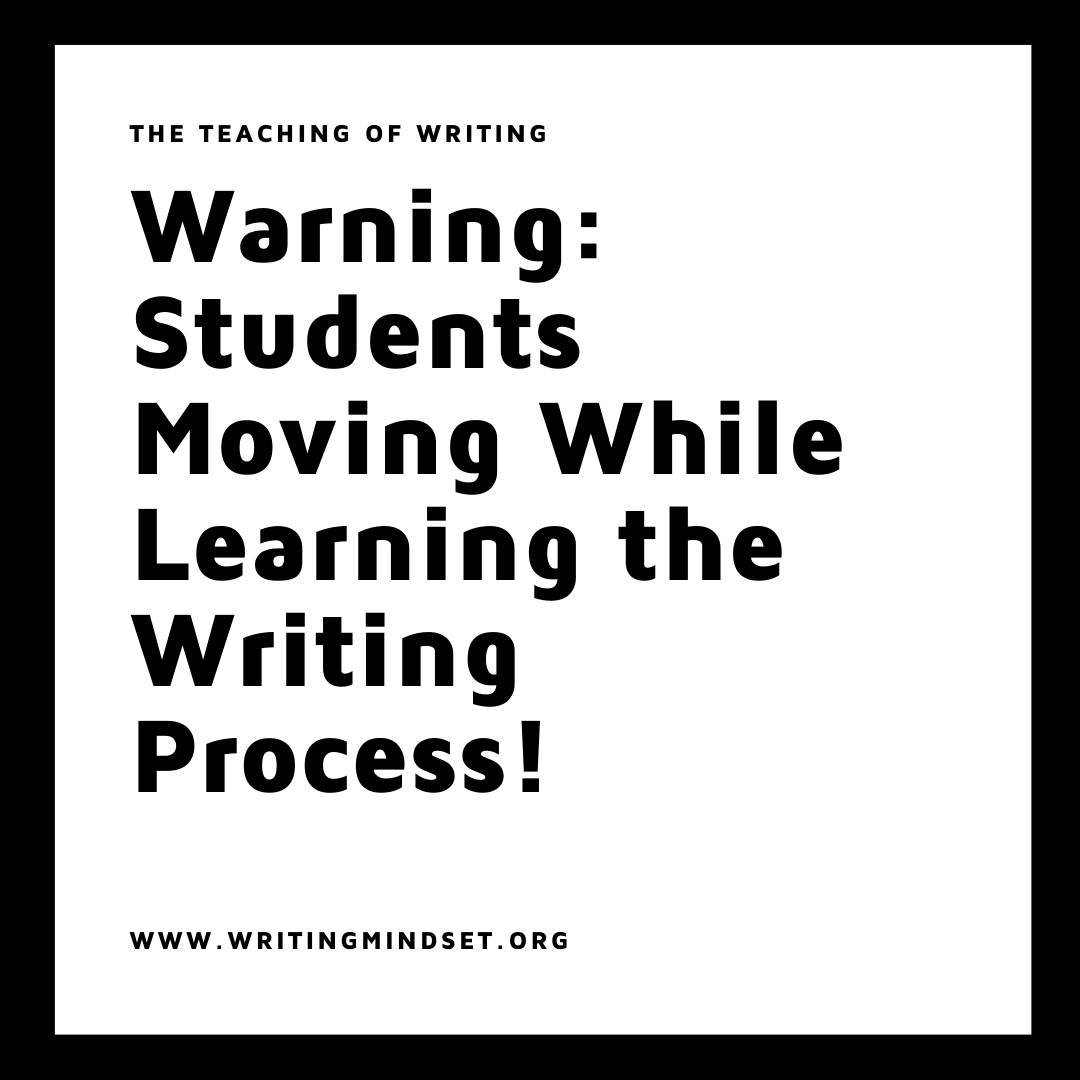Warning: Students Moving While Learning the Writing Process!
Proceed with Caution. Students Will Talk and Enjoy Learning.
One thing that I observe with my mentee pre-service teachers is that they are often scared of movement in the classroom. If students are moving, they are hard to control. If students are moving and talking...well, gasp! How does one come to terms with student movement and volume? The best answer is to work activities with accountability into daily lesson plans that allow students to get up and move! Movement + Accountability=Magic.
Two of these activities are the Poster Walk and the Gallery Walk. Both involve walking and writing. When students are allowed to move around the classroom, they are empowered. The same concept applies to Q & A or classroom discussion. When students practice talking in the classroom, they increase their discussion skills. I use both of these standby strategies to embrace my students' voices and respect their ability to move around with my trust.
The Poster Walk aka "Tabletop Twitter"
I like to do this activity with quotations or pictures. Originally, Kylene Beers and Robert Probst came to our district to do a professional development when I first learned this strategy. I had the privilege of having them in my classroom to critique some of the strategies that we learned in the workshop. This was called a Poster Walk. They have now updated it to be called "Tabletop Twitter." The rules of the poster walk include posters or large pieces of paper that contain short phrases, passages, words, or pictures that invoke a student response. Students remain silent or at a volume zero while they walk around they room to the different stations with posters. They can engage in a conversation, but it must be on paper. Here were some of the results:
One thing that I observe with my mentee pre-service teachers is that they are often scared of movement in the classroom. If students are moving, they are hard to control. If students are moving and talking...well, gasp! How does one come to terms with student movement and volume? The best answer is to work activities with accountability into daily lesson plans that allow students to get up and move! Movement + Accountability=Magic.
Two of these activities are the Poster Walk and the Gallery Walk. Both involve walking and writing. When students are allowed to move around the classroom, they are empowered. The same concept applies to Q & A or classroom discussion. When students practice talking in the classroom, they increase their discussion skills. I use both of these standby strategies to embrace my students' voices and respect their ability to move around with my trust.
The Poster Walk aka "Tabletop Twitter"
I like to do this activity with quotations or pictures. Originally, Kylene Beers and Robert Probst came to our district to do a professional development when I first learned this strategy. I had the privilege of having them in my classroom to critique some of the strategies that we learned in the workshop. This was called a Poster Walk then. They have now updated it to be called "Tabletop Twitter." The rules of the poster walk include posters or large pieces of paper that contain short phrases, passages, words, or pictures that invoke a student response. Students remain silent or at a volume zero while they walk around they room to the different stations with posters. They can engage in a conversation, but it must be on paper. Here were some of the results:
The best part about this activity is that it often serves as a precursor to a whole group discussion. Students can brainstorm ideas for a conversation, but can do so in a fun way that gets them up and moving. This feels like writing notes to students. And who doesn't like to write notes? I embrace some of the notes that are funny or off-task because they are few and far between. I think that we can break down and have some fun in the classroom, too.
The Gallery Walk
The second movement activity that I like to include in my classroom is the Gallery Walk. Think of an art gallery. You get to walk around and choose what you want to look at. You take in the images and the words (if applicable). I tell students to take their time when walking around. For our latest books, I had students use Thinking Maps to demonstrate their knowledge of the literary elements in the text. I love thinking maps. This was one of the strategies that changed my game when it came to teaching. As visual learners, most of us seek to understand through image. I want to see images; students want to see images.
The Gallery Walk takes more preparation. Students must create the visuals which normally can take up to two class periods. The posters are hung on the walls. Students utilized the Frame of Reference to provide thought-provoking questions on the visual representations. Again, these provided a good basis for whole group discussion. Here are some of the maps in the Gallery Walk:
Students were then able to write down 4-5 Frame of Reference questions that they found interesting. I used it as a way to help students analyze the quality of open-ended and close-ended questions. Then, students responded to their favorite question in the form of a quick write.
Both of these activities will remain staples in my classroom. I love getting students up and moving in the classroom. Movement and voice are the antithesis to boredom!
Mindset Words: "The student is not a container that you have to fill but a torch that you have to light up" -Albert Einstein
"Education is not a passive process" -President Barack Obama

